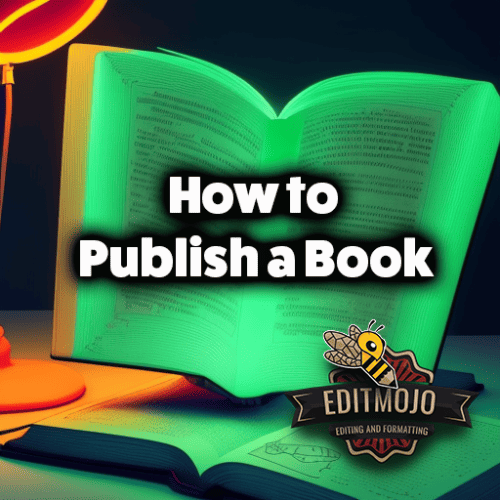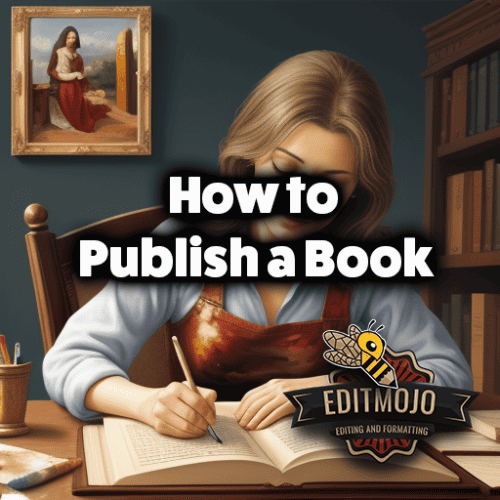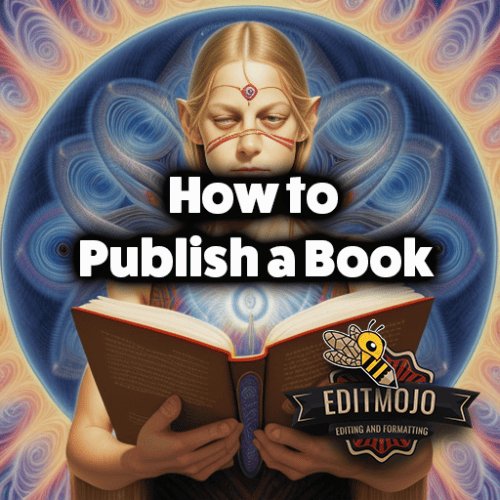1. How to Publish a Book
How to publish a book. In the world of creative endeavors, few accomplishments carry the weight and satisfaction of seeing your book on a store shelf or listed online. It’s a journey that starts with a single word and ends with the vast, intricate process of book publishing. This guide will serve as your compass, navigating you through the labyrinthine publishing industry. From the initial conception of an idea to the final distribution of your masterpiece, our step-by-step guide covers everything you need to know. Let’s begin the journey!
Key Takeaways Table
| Section | Key Takeaways |
|---|---|
| Writing Your Manuscript | Cultivate a regular writing habit, develop a compelling plot and characters, and revise your work multiple times. |
| Understanding the Industry | Understand the differences between traditional and self-publishing, and select the best route according to your goals. |
| Preparing for Publication | Invest in professional editing, design a compelling cover, craft a gripping blurb, and comply with legal requirements. |
| Traditional Publishing Route | A literary agent can be a strong ally. Know how to write an engaging query letter and understand the terms of a publishing contract. |
| Self-Publishing Route | Choose the right platform, understand the publishing process, and strategically price your book. |
| Marketing and Promotion | Build a robust author platform, devise an effective launch strategy, and utilize both traditional and digital marketing strategies. |
| Generating Additional Revenue | Consider different formats and additional markets. Explore licensing opportunities and ways to expand your brand. |
| Post-Publishing Landscape | Continually market your book, manage your finances, and plan your next project. |
2. Writing Your Manuscript
Crafting an Idea
Every book begins with a spark, an idea. But transforming that spark into a compelling narrative is an art in itself. Whether you’re writing fiction or non-fiction, the goal is to capture your reader’s imagination. To do this, your idea should be original, engaging, and offer value or entertainment. Read widely in your chosen genre, study the market, and see what works. Remember, the best ideas often come from personal passions and experiences.

Developing Your Plot and Characters
In fiction, your plot and characters are the heart and soul of your book. From the intricacies of George R.R. Martin’s ‘Game of Thrones’ to the simplicity of Ernest Hemingway’s ‘The Old Man and the Sea,’ every story has a unique flavor. Take time to build your characters, making them believable and relatable. Similarly, craft a plot that holds your reader’s attention to the very last page.
Writing Habits and Strategies
Writing a book is a marathon, not a sprint. It requires dedication, discipline, and a regular writing habit. Stephen King, in his book On Writing: A Memoir of the Craft, advocates for writing every day, setting a target of 2,000 words. Find what works best for you and stick with it.
Self-editing Tips
Your first draft is just that – a draft. It won’t be perfect, and that’s okay. Writing is rewriting. The key is to get your thoughts down and then revise, revise, revise. Consider self-editing tools like Grammarly and ProWritingAid, but remember, nothing replaces a thorough, manual edit.
Knowing When Your Manuscript is Ready
This is subjective and can be one of the hardest steps. After multiple revisions, share your manuscript with beta readers, friends, or writing groups. Their feedback can be invaluable in knowing when your work is ready to take the next step.

Utilizing Professional Editing Services
After revising your manuscript yourself, it can be beneficial to use a professional editing service. EditMojo.com is one such platform that provides a variety of services to help writers polish their manuscripts. Their team of editors specializes in everything from developmental editing, which looks at the bigger picture of plot, characters, and structure, to line editing, focusing on clarity, tone, and style. They even offer proofreading services to catch those minor errors in grammar, punctuation, and spelling that might have slipped through earlier edits.
Using an editing service like EditMojo.com can provide an invaluable fresh set of eyes on your work. Their experts can spot inconsistencies, plot holes, or areas of confusion you might have missed. They also provide constructive feedback to help you improve your writing and storytelling abilities for future projects. Remember, even the most successful authors utilize professional editors to ensure their work is the best it can be. It’s not about changing your story but refining it to perfection. So, when you feel like you’ve done all you can on your own, consider turning to the professionals at EditMojo.com to help bring your manuscript to the next level.
3. Understanding the Publishing Industry
The world of publishing can seem daunting. However, understanding its landscape, the role of agents, publishers, and marketers, as well as the major differences between traditional and self-publishing is crucial for making an informed decision. Both have their pros and cons, and what works best largely depends on your goals, resources, and commitment level.

4. Preparing for Publication
Once your manuscript is polished, it’s time to prepare for publication. This involves several important steps.
Professional Editing
Never underestimate the power of a professional editor. They can take your manuscript from good to great, catching mistakes you might’ve missed. The Editorial Freelancers Association offers a database of professional editors.
Cover Design
People do
judge books by their covers. A high-quality, professional cover can significantly boost your sales. Platforms like 99designs or Reedsy can connect you with skilled cover designers.
Compelling Book Blurb
Your blurb, the description on the back of your book, can be a deciding factor for potential readers. Make it engaging, tantalizing, and true to the content of your book.
ISBN, Copyright, and Legal Requirements
Don’t forget about the legal aspects of publishing. Purchase an ISBN, register your copyright, and ensure you’re not infringing on anyone else’s rights. This guide from the U.S. Copyright Office can help you understand the basics.

5. Traditional Publishing Route
Traditional publishing involves partnering with a publishing house to get your book to market. This path has several steps.
Finding and Selecting a Literary Agent
A good literary agent is a powerful ally. They can help you polish your manuscript, find the right publisher, and negotiate a fair contract. Resources like Writer’s Market can help you find reputable agents.
Crafting a Query Letter and Book Proposal
Your query letter and book proposal are what you’ll use to catch an agent or publisher’s attention. They should be compelling, professional, and highlight the unique selling points of your book.
Understanding a Publishing Contract
Publishing contracts can be complex. Make sure you understand your rights, the terms of the agreement, and any potential royalties. When in doubt, consult with a literary lawyer.
The Role of a Publisher
A publisher handles the production, marketing, and distribution of your book. They bring industry knowledge and resources, but also control much of the process. It’s a partnership, so choose a publisher that aligns with your vision.
6. Self-Publishing Route
Self-publishing offers more control and a higher percentage of royalties. It requires more work, but the potential rewards can be great.
Overview of Self-Publishing Platforms
Today, various platforms like Amazon Kindle Direct Publishing (KDP), Smashwords, and Lulu make self-publishing more accessible than ever. Each platform has its pros and cons, so research thoroughly.
Navigating the Self-Publishing Process
The self-publishing process involves multiple steps, from finalizing your manuscript to formatting, cover design, and setting your price. Each platform will have specific guidelines you’ll need to follow.
Pricing Your Book
Pricing is a strategic decision and should consider factors like book length, genre, and competition. Remember, your goal should be to maximize your readership and profits.
7. Marketing and Promoting Your Book
In today’s digital age, marketing your book is crucial for success, whether you’re traditionally published or self-published.
Building an Author Platform
An author platform is your presence online, including your website, blog, and social media profiles. This is where you can engage with readers, share updates, and promote your book. Start building your platform early and update regularly.
Book Launch Strategies
A successful book launch can create a significant initial sales spike. Consider a launch team, press releases, launch events, and promotional pricing.
Importance of Book Reviews
Reviews are powerful marketing tools. Consider offering free copies of your book to readers in exchange for an honest review. Websites like NetGalley can help facilitate this.
Traditional and Digital Marketing Strategies
Use a mix of traditional marketing (like book signings and media appearances) and digital marketing (like social media, email marketing, and SEO).

8. Generating Additional Revenue from Your Book
Exploring Audiobook and eBook Formats
With the rise of platforms like Audible, more people are consuming books in audio format. Similarly, eBooks continue to be a popular choice for readers. Offering your book in multiple formats can boost your reach and revenue.
Foreign Rights and Translations
If your book does well, you might consider selling foreign rights or translating it into other languages. This opens your work up to a global audience.
Licensing Possibilities
From film and TV adaptations to merchandise, there can be many licensing opportunities for a successful book. J.K. Rowling’s Harry Potter series is a prime example of this.
Expanding Your Brand
Consider related products or services like speaking engagements, workshops, online courses, and more. These can enhance your reputation and provide additional income.
9. Navigating the Post-Publishing Landscape
Publishing your book is not the end of the journey. It’s the beginning of a new phase. Continue marketing your book, managing your royalties, and planning your next steps.
10. Expert Advice: Interviews and Insights
Seek advice from industry experts. Glean insights from successful authors, literary agents, publishers, and book marketers. Their wisdom can help you avoid common pitfalls and propel your success.
11. Resources for Aspiring Authors
There are many tools and resources available to help you on your publishing journey. These include writing software, self-editing tools, online writing communities, and courses on book publishing.
12. Conclusion
Publishing a book is an adventure, filled with highs, lows, challenges, and victories. But with the right guide, determination, and a splash of courage, it’s a journey that can lead to incredible rewards. So, hold tight to your dreams and start writing. The world is waiting for your story!
Top Five Questions & Answers
| Questions | Answers |
|---|---|
| 1. How can I determine if my manuscript is ready? | Get feedback from beta readers, friends, or writing groups. If the feedback is positive and you feel satisfied, it might be ready. |
| 2. Should I choose traditional publishing or self-publishing? | It depends on your goals. Traditional publishing offers more support, while self-publishing offers more control and potentially higher royalties. |
| 3. How can I market my book effectively? | Use a mix of traditional and digital marketing strategies. This could include social media promotion, email marketing, book signings, and media appearances. |
| 4. How can I generate additional revenue from my book? | Consider creating an audiobook or eBook version, selling foreign rights, licensing your book for TV or film, or offering related services like workshops. |
| 5. What should I do after publishing my book? | Continue marketing your book, manage your royalties, and start planning your next book. |
Top Seven Resources & Further Reading
| Resources | Details |
|---|---|
| Stephen King on Writing | Tips from a master storyteller on cultivating a writing habit. |
| Grammarly | An online tool to help with self-editing. |
| Editorial Freelancers Association | Find a professional editor here. |
| 99designs | A platform to find skilled cover designers. |
| Writer’s Market | A database of literary agents. |
| Amazon Kindle Direct Publishing (KDP) | A popular self-publishing platform. |
| NetGalley | A website that connects authors with potential reviewers. |
